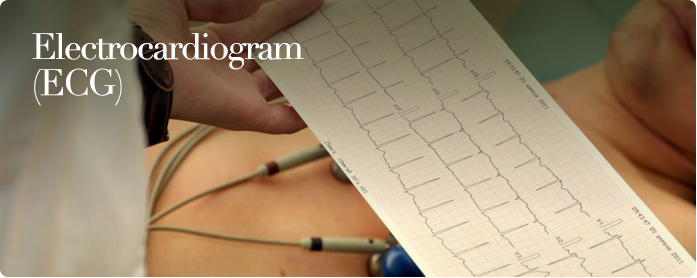
Make an appointment

Home ›
Electrocardiogram (ECG)
Electrocardiogram (ECG)
| An ECG is a graph of the electrical activity of the heart. It is a non invasive test. |
|
| It is performed by placing gel-containing electrodes on the chest and limbs and connecting the electrodes to a machine which measures the very tiny electric current which flows through the body as a result of the electrical current which flows through the heart to produce the heartbeat. The electric current is displayed and recorded as a graph containing 12 leads, which can be thought of as looking at the flow of current in the heart from 12 different directions. In this way a composite picture of the electrical activation of the heart can be derived. |
|
| Doctors use this ECG to calculate the heart rate, determine if the rhythm is regular or irregular, diagnose abnormal heart rhythms (e.g. atrial fibrillation, supraventricular tachycardia, ventricular tachycardia), presence of heart block (due to nerve block), diagnose a heart attack (ongoing or old), diagnose heart chamber enlargement and certain congenital conditions such as Long QT Syndrome or Brugada Syndrome. |
|


